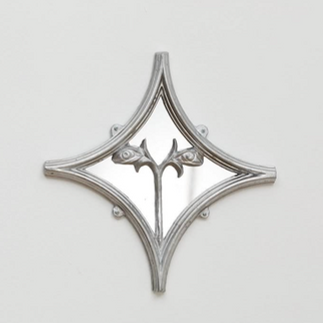ACH Outings - A Plaster Workshop with Saffron Mouldings
- AW

- Sep 11
- 4 min read
Last month the ACH team got their hands dirty learning how to create plaster cornicing with the talented Melloney Harvey of Saffron Mouldings. We wanted to use this year's summer day out as an opportunity to gain a better understanding of some of the techniques and processes we specify within our projects as well as having a good time as a studio and Mell made sure this was the case.

A Brief History of Plasterwork in Architecture:
Plaster has had a place within architecture since early man first started building themselves a home. Modern plastering has evolved from ancient mud techniques to the methods we see today that utilise gypsum plaster and drywall.
A whistle stop tour of plaster in architecture starts with prehistoric mud, often used to seal and insulate dwellings, and moves swiftly to the development of the craft in ancient Egypt with the introduction of lime plaster. They used plaster not only for it's structural properties but as a base to adorn tombs with murals and inscriptions. This use segways delightfully into the Middle Ages with its intricate use of mouldings, textures and detailed embellishments solidifying plaster as a decorative technique for the ages. The Renaissance and Baroque era continued this with the material soon becoming central to the architectural and artistic innovations of the period. Most notably is the use of fine stucco to create detailed mouldings, frescoes and bas-reliefs. The Baroque pushed this even further with 3D embellishments, bright colours and gilded finishes. We then come to the industrial revolution and the technological advances that brought us gypsum plaster. This quick drying medium gave a smooth finish which paved the way for the modernist minimal aesthetic and clean lines that are so common in modern homes.
The Workshop:
The workshop began with an introduction to the use of cornicing and decorative plaster throughout the ages to give us some inspiration as well as examples of Mell's own work. This, and a few strong coffees, got us pumped for the session ahead.
We started with a messy demonstration of how to create the coving which is the base of the cornice. Mell starts with a lubricated mould and sploshes on a layer of plaster to achieve the smooth face of the coving and create a base to build up from. Then hessian and wooden lath reinforcements are added to ensure the structural integrity of the lengths before more plaster is added to complete the piece. The method used by Mell is similar to that used in the 18th and 19th century as she often uses her skills to restore or replace cornicing in period properties where historically accurate techniques really make all the difference.
We then got to start looking through the silicone moulds Mell handmakes to design our pieces. She carefully sculpts clay or takes casts from existing period motifs to create reusable moulds she can use within her work, or to make sure plaster novices such as ourselves walk away with something beautiful. For this we mixed up some more plaster and got to work filling our chosen moulds, using strands of the hessian to reinforce the more intricate designs. Once the plaster had set we filed them down to fit perfectly into the coving before sticking them down onto our bases. The team came up with some very different designs ranging from Matt's minimalist beading to Ines's abundant fruity creation.
To finish off the day we were giving a scagliola demonstration to show us another way in which plaster can be used for ornamentation. Scagliola is a method that imitates marble or stone and can be used for everything from pillars to fireplace surrounds. This process has been used throughout the ages but was particularly popular in 16th century Italy during the Renaissance where the process was refined. The process involves mixing plaster, some rather smelly rabbit glue and various amounts of pigments to create the marbled effect. The pigments are added gradually with portions of the mixture removed at each stage to create a variety of tones which, when added back together achieve the marbled and veigned surface that mimics natural stone so well. Mell not only uses this process to create architectural elements but also in her art practice, which you can see at the end of this post.
Since our workshop Mell has started a firm with fellow plaster extraordinaire Viola Lanari called Mevimi specialising in gypsum and lime plaster decoration. Below you can see some progress shots of a house they have been working on recently, designing and implementing the exterior decoration of the property.
Not only is Mell an incredible bespoke and fibrous plaster pro, she is also an amazing artist utilising plaster and metal to create beautiful sculptural pieces. These range from her stylised takes on the classic ceiling rose to ornate urns. You can see a selection of her pieces below and if you're intrigued you can see even more of her works here, I'd definitely recommend giving her a follow. The piece in the centre is made using the scagliola process.
A huge thank you to Mell for taking the time to come and teach us about what her craft entails! Don't hesitate to get in touch with her for a similar workshop, as we can all attest to what a wonderful experience it was for us at ACH, or for any of your plaster needs.

This blog has been written by Amber, our studio manager. Amber is a 2020 Communication Design graduate from the Glasgow School of Art and founder of Bloom & Body, a small ceramics business focusing on the human form.







































Comments